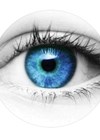In the modern world, our electronic devices have now become an extension of ourselves, with our reliance and use of them of comparable importance to an arm or a leg. The importance of electronic devices can also be seen in public health and medical education, with the pandemic only expediting the inevitable shift to educating the public and trainees online, with platforms such as Zoom now integral in hosting a variety of medical events.
Social media has also played a big part in this shift in delivering public health information, as well as medical education online, with the big drivers Facebook, YouTube, Twitter and Instagram becoming go-to educational tools used by institutions and influencers due to their massive engagement and far reach. Social media’s effectiveness has also been backed by research, with one systematic review showing use of social media in medical education improving engagement and personal development [1].
The newest addition to these platforms is TikTok, with over a billion users creating short-form eye-grabbing video content that helps bridge the gap between the still images of Instagram or Facebook and videos of YouTube to create a unique offering. TikTok is not just a platform providing the world with the latest dance crazes; it’s now being used as a tool by a variety of medical professionals in the interest of public health and trainee support, with its implications in dermatological medical education recently being explored [2]. It’s newfound importance in medicine has only been exemplified by videos with the hashtags “doctor” and “coronavirus” gaining a whopping 29 billion views and 113 billion views respectively. It’s become a medium where doctors have been able to provide short-form teaching to trainees, as well as share their personal experiences and views of medicine in often entertaining and creative ways.
Ophthalmic consultants and trainees, as well as optometrists, are also joining this trend, with hashtags “ophthalmology” hitting 86 million views and “eyedoctor” hitting 362 million. This is a relatively new space for ophthalmologists, mainly made up of trainees from the US, however, expect to see huge growth in this space as well as UK engagement in the upcoming years. But for now, I leave you with my top five ophthalmology TikTok accounts that I feel best engage and educate both the public and trainees.

@Drglaucomflecken
The most high-profile ophthalmologist on the whole of TikTok with a following of over a million people. Dr Will Flanary, his real name, is a US Ophthalmologist, combining comedy, ophthalmic and other medical related content into hilarious sketches that are addictive to watch but also educate about eye health and provide trainee insights into careers. His highly relatable sketches and caricature-like portrayal of a variety of specialties are my favourite on the platform and will keep you scrolling on and on.

@shafereyemd
Dr Brian M Shafer is an Ophthalmic Surgeon from the US who creates content directed toward junior trainees and the interested public. Creating short videos, using real life patient eye examinations and procedures, as well as anatomy diagrams to talk about a variety of ophthalmic conditions, procedures and pharmacology. The combination of short real life procedural videos and live explanations I find particularly helpful and let me gain an insight into what different procedures involve.

@bettervision
Dr Brittani Carver is a US optometrist using patient videos to show and talk about common ophthalmic and optometric complications in the younger generation and how to avoid them, as well as what can go wrong if good eye health isn’t maintained. She delivers information on a variety of content, from contact lens hygiene to signs of eye cancers, providing easily digestible information for the public in an engaging form.

@thevisiondoctor
Dr Kaushal Kulkarni is a Neuro-ophthalmologist that focuses on neuro-ophthalmic cases to educate both trainees and the public. He talks through cases as well as scans, with the videos using MRI imaging to help dissect a variety of neuro-ophthalmic conditions, these are my favourites.

@dr.mfarr
Last but not least, Eye Doctor Mike is a US Optometrist that again provides videos on eye health for the public using a combination of sketches, video reactions and public Q&As. However, he also creates unique videos showing what patients with eye conditions’ experience is like. There are great representations of patients’ vision in a variety of conditions, from astigmatism to glaucoma.
References
1. Cheston C, Flickinger T, Chisolm M. Social Media Use in Medical Education. Academic Medicine 2013;88(6):893-901.
2. Nikookam Y, Guckian J. TikTok™ and dermatology: lessons for medical education. Clinical and Experimental Dermatology 2021;46(5):952-3.
Declaration of competing interests: None declared.
COMMENTS ARE WELCOME












